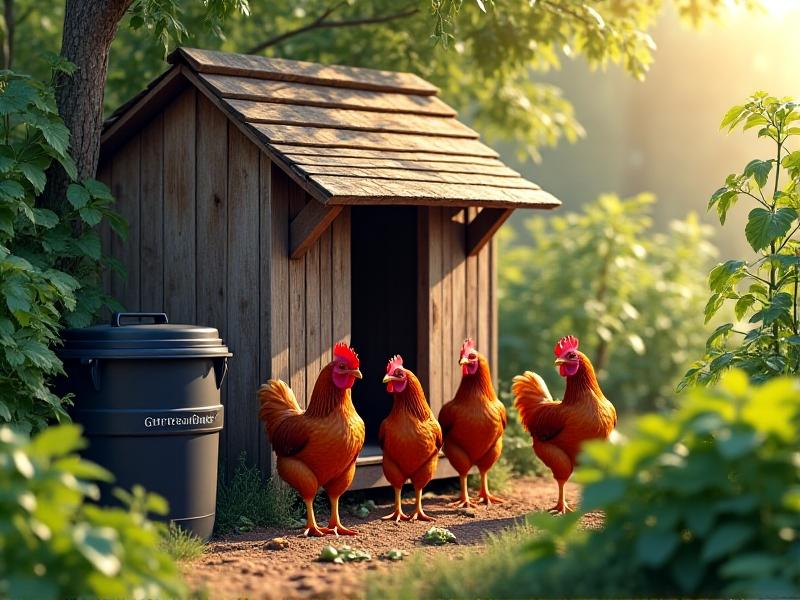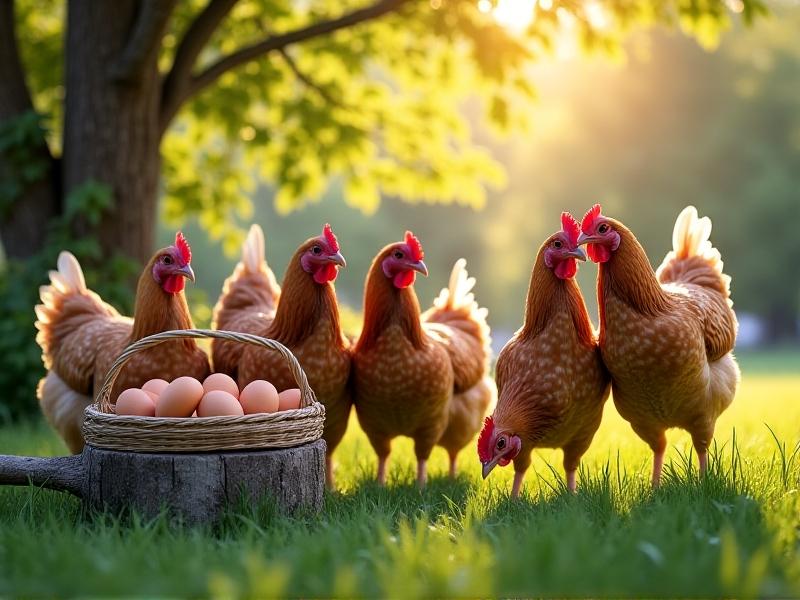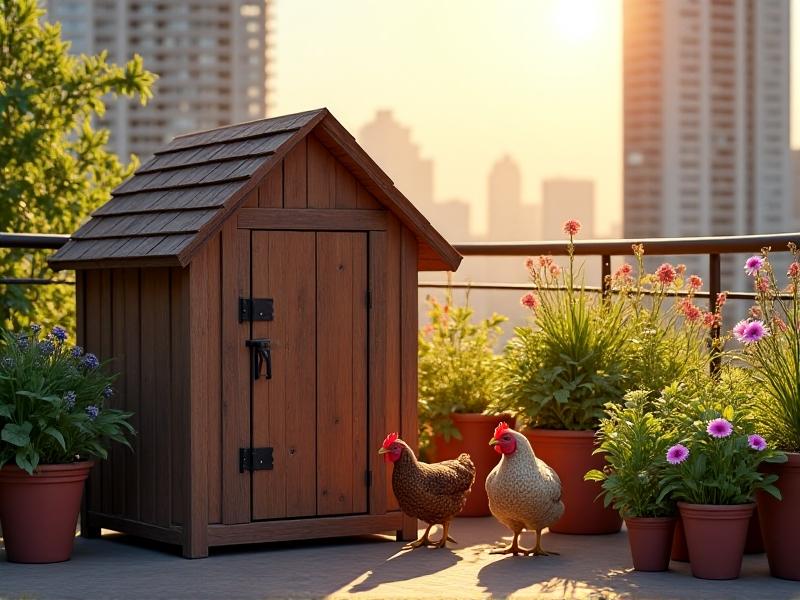Preventing Egg-Binding: Critical Care for City Hens
Understanding Egg-Binding: A Silent Threat to Urban Hens
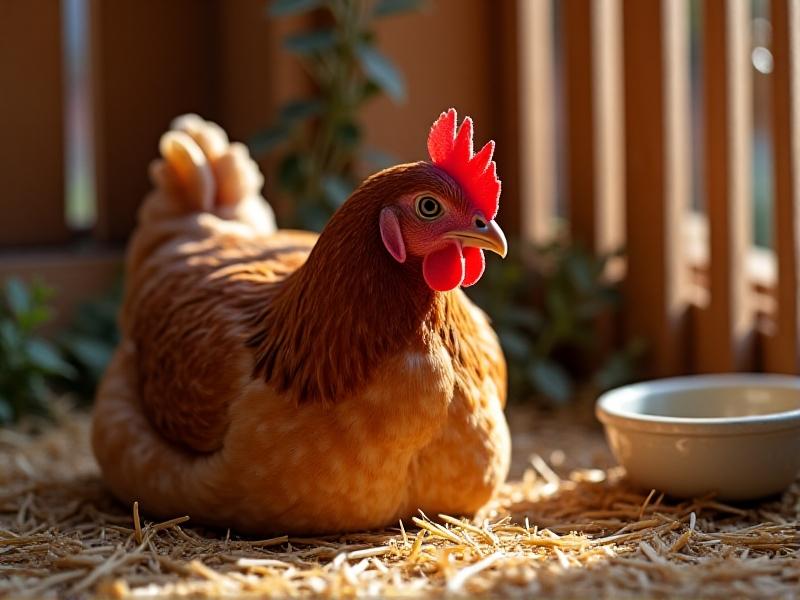
Egg-binding, a condition where a hen cannot pass an egg, is a life-threatening emergency that disproportionately affects backyard and urban flocks. Unlike commercial poultry operations, city hens often lack specialized veterinary care, making prevention critical. This reproductive issue stems from muscle weakness, nutritional gaps, or environmental stressors—factors exacerbated in urban settings where space and resources may be limited. Left untreated, egg-binding can lead to infection, organ damage, or death within 48 hours. Urban chicken keepers must recognize that their hens’ compact living environments and curated diets require vigilant management to avoid this preventable crisis.
Why City Hens Face Unique Risks

Urban hens navigate challenges their rural counterparts rarely face. Limited roaming space reduces natural foraging behaviors that strengthen reproductive muscles, while light pollution from cityscapes disrupts laying cycles. Many urban owners unknowingly compound risks by offering inappropriate treats like bread scraps, which lack the calcium needed for strong eggshells. Concrete-dominated yards also limit access to grit and insects that provide essential nutrients. The trend of keeping hens as "pets" rather than livestock sometimes leads to overfeeding, creating overweight birds with compromised pelvic muscles. These factors create a perfect storm for egg-binding in environments where emergency avian vet care might be hours away.
Decoding the Warning Signs
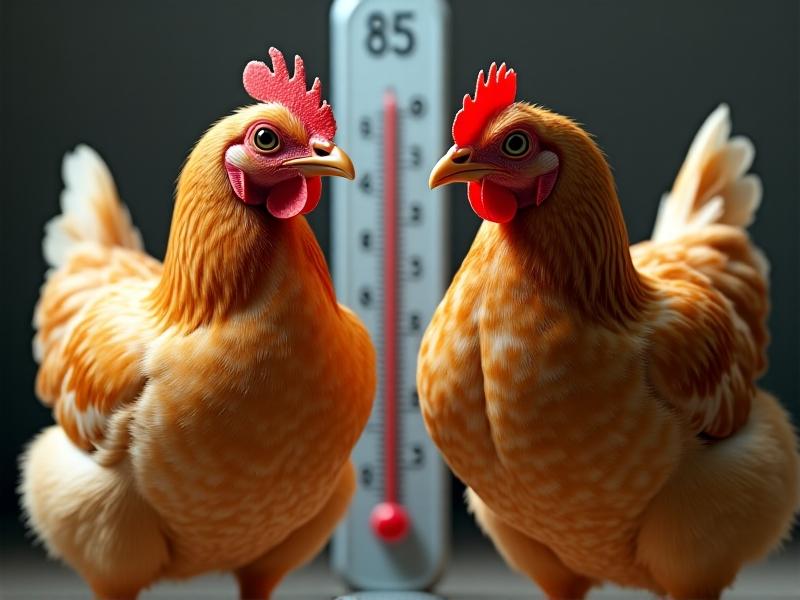
Early intervention hinges on recognizing subtle behavioral shifts. An egg-bound hen may isolate herself, repeatedly visit nesting boxes without laying, or adopt a penguin-like stance to relieve pelvic pressure. Watch for tail pumping motions—a rhythmic up-down movement attempting to shift the egg. Gently palpate the abdomen (avoiding the keel bone) to detect hard masses. Comb color changes from vibrant red to purple indicate circulatory distress. By tracking daily egg production and monitoring droppings (look for urate streaks or reduced output), keepers can establish baselines to spot deviations. Urban owners should conduct weekly "well-hen checks," feeling for body condition and vent cleanliness between formal vet visits.
Calcium: The Urban Hen’s Best Defense

Calcium metabolism dictates eggshell quality and muscle function. City hens need 4-5 grams of calcium daily—equivalent to one oyster shell teaspoon. Free-choice calcium sources prevent binding better than mixed-in supplements, allowing hens to self-regulate intake. Offer separate feeders with crushed eggshells (baked to kill pathogens) and limestone grit. Vitamin D3 synthesis, crucial for calcium absorption, requires unfiltered sunlight—a challenge in shaded yards. Install full-spectrum poultry lights in coops during winter months. Beware of spinach and beet greens containing oxalic acid that binds calcium. Instead, grow calcium-rich comfrey or kale in vertical planters, combining nutrition with urban-space innovation.
Engineering the Anti-Binding Coop
Coop design directly impacts reproductive health. Install nesting boxes at ground level to prevent jumping strain, using dimensions of 12"x12"x18" for standard breeds. Line boxes with hemp bedding—its antimicrobial properties reduce infection risks while providing gentle support. Create "pelvic training areas" with platforms at varying heights to encourage muscle development. Install a brooder lamp with a dimmer switch to maintain 16 hours of daylight without causing overheating. For multi-level coops, ensure ramps have a 20-degree incline with anti-slip treads. A study by Urban Poultry Keepers Alliance found hens in enriched environments had 63% fewer binding incidents than those in basic setups.
Hydration Hacks for Hard-Boiled Situations
Dehydration thickens egg membranes, increasing binding risks. Urban hens lose more moisture through respiration in heat-island affected areas. Install automatic waterers with electrolyte additives during peak lay periods (spring/fall). Freeze herbal teas (peppermint or raspberry leaf) into ice blocks for dual hydration/enrichment. Train hens to recognize water sources by tapping containers during refills—a technique adapted from quail husbandry. Monitor intake by marking water lines with permanent markers; a healthy hen drinks 1-1.5 cups daily. In drought-prone areas, install rain barrels with avian-safe filters, as chemically treated tap water may deter drinking.
When Crisis Strikes: Urban First Response
Every city hen keeper needs a binding emergency kit. At first signs, isolate the hen in a dog crate with 85°F heat to relax muscles. Prepare a warm Epsom salt bath (100°F) in a shallow tub, supporting the hen’s chest while massaging the vent area. Use a lubricated gloved finger to check for egg fragments—never pull forcefully. Subcutaneous calcium injections (0.1ml/kg) can provide rapid relief if trained. Urban owners should pre-arrange "emergency vet networks" through local poultry Facebook groups, as many clinics keep extended hours for registered flock owners. Document the incident in a health log, tracking recovery progress and adjusting prevention strategies accordingly.
Building a Binding-Resistant Flock
Long-term prevention starts with breed selection. Dual-purpose birds like Orpingtons have wider pelvic canals than high-production Leghorns. Track your hens’ "egg-to-body ratios"—those consistently laying eggs over 3% of their body weight are binding candidates. Introduce new bloodlines through urban chicken swaps to improve genetic diversity. For aging hens, implement phased retirement from laying by reducing light exposure gradually. A 2023 Cornell study showed hens transitioned to non-laying roles (compost turners, therapy birds) maintained better muscle tone than abruptly retired layers. Spaying, though risky, becomes viable for chronic cases in cities with advanced avian surgeons.
The Future of Urban Hen Health
Innovations are transforming urban hen care. Smart coops now sync with apps to track egg counts and weight fluctuations. 3D-printed calcium feeders dispense supplements based on biometric scans. Community science initiatives map binding incidents citywide, identifying environmental hotspots. As urban agriculture grows, so does the need for binding-specific insurance policies and mobile hen ambulance services. By combining ancient wisdom with modern tech, city dwellers can ensure their flocks thrive—one healthy egg at a time.

